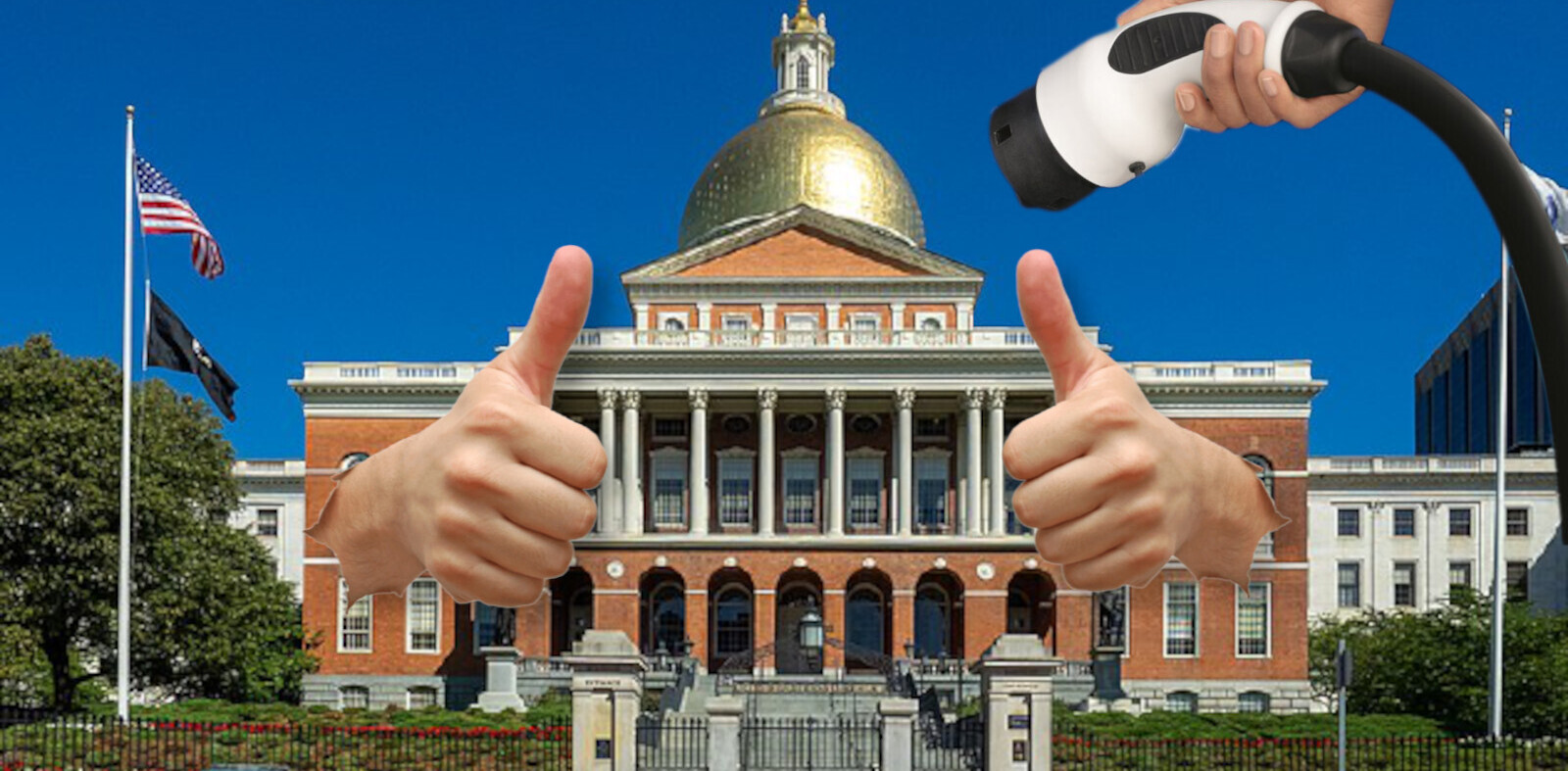
How does a sport go from a series of events to climate activists? And an international sailing competition? Surely, there’s something radically divergent between a series of multi-million dollar races which involve travel around the planet and sustainability –- or is there?
Upon hearing that the SailGP is the first climate-positive sport on the planet, aided by a whole load of innovation in sailing and technology, I wanted to find out more. So I headed to San Francisco to learn all about it. To be clear and transparent, just so you know, I attended on the league’s dime.
Let’s start with the basics:
What’s SailGP?
SailGP is a global sailing league co-founded in 2019 by tech mogul Larry Ellison, co-founder, CTO, and former CEO of Oracle.
It’s a sport where national teams race identical F50 wing sail catamarans that fly across the water on hydrofoils at speeds up to 96kmph (60 mph), making them some of the fastest on the sea — or akin to Formula 1 cars on water. The sailboats are literally powered by nature (wind, sun, and water).
Each season comprises eight or more events across the globe, with each event including multiple races. Events occur across two days, with six races scheduled for each Sail Grand Prix. And the prize is a tidy $1 million for the winning team.

What does it mean to be carbon-positive?
Don’t worry, I asked too.
Basically, it goes beyond achieving net-zero carbon emissions by removing more carbon dioxide from the atmosphere than it emits, committing to being Climate Neutral Now, a regulatory framework set by the United Nations.
SailGP says it has removed over 50,000 tons of CO2 from the atmosphere. This is the equivalent to taking almost 11,000 cars off the road for a whole year.
This is determined through an initial carbon inventory, subsequent action plan, and pretty laborious carbon tracking and external auditing by an independent third party. It includes the use of a greenhouse gas calculator which you can download here.
Okay, that sounds pretty good, but we’re talking about sailing. Isn’t that an activity just for rich people who care more about champagne than carbon miles?
Would it be better to not have sailing competitions at all to reduce the environmental impact in the first place?
Don’t worry; I asked all the uncomfortable questions!
Putting good intentions into practice
I met with Thomas Verity, Water Transition Manager, and Fiona Morgan, the Global Director of Purpose & Impact at SailGP, to determine how and why the sport decided to become purpose-driven and commit to sustainability.
I mean, it’s logical that sailors have an affinity for protecting and preserving the ocean, but racing?
Verity explained that the marine industry is about 20 years behind the automotive industry regarding sustainability. As he notes:
Most people own a car. They don’t own a boat. So people in a car want to see the trends in the wider technology world. And they’re pushing that they would want electrification.
But without a critical mass, boating has lacked such consumer drive. What a race event like SailGP can do is act as a catalyst for change. It can be a role model for the sailing community, and accelerate the R&D that evolves sustainability throughout the industry.
Sport as a catalyst for industry innovation
Racing sailboats at their maximum speed is a pretty good way to test out the latest tech under pressure.

I can see a lot of parallels with FormulaE’s (electric vehicle racing) efforts to accelerate battery innovation through testing batteries at high speed. And likewise, it recognizes that people like sport, and it can be used as a catalyst for change.
It’s also about collaboration and partnerships. Many of these are a first for the industry and will benefit other racing events, the Olympics, and other sports with a global presence. Let’s be honest, people aren’t going to stop watching the Olympics (which includes sailing), so sports setting standards and benchmarks for other competitions can only be a good thing.
Developing solutions to big structural challenges
One of the challenges is that the race boats need shipping to each race site. Global freight partner Kuehne+Nagel is helping set a new standard for major event logistics, minimizing the carbon footprint of the sail racing league’s transports through sustainable shipping methods, including using alternative fuels.

Another partner is MarkSetBot, who creates robotic sailing buoys.
Traditionally, races required fleets of gas-powerboats to set marks for the race track, burning fossil fuels, and consuming volunteer resources. In deep water venues, this pollution is often compounded with marks set using line and cinder blocks. These were abandoned at the end of each day to sink into the ocean in the past.
This is avoided by using the robotic buoys that are self-propelled and using GPS technology to zero in on a specific location and anchorlessly (that’s a real word, I promise) hold position until you instruct them to move. This removes the need for additional boats on the water to position the buoys for each race.
The race also provides an opportunity to develop infrastructure in each host city, such as electric and hydrogen charging solutions for all boats, which host cities typically lack. And access to infrastructure increases the likelihood of eboat adoption, especially among recreational boat users – for example, in 2020, there were about 11.84 million registered vessels in the US.
The tech can also help emergency services and service and rescue services, as well as commuting vessels to transition to eboats, as they need access to reliable infrastructure.
Verity explained that SailGP is working with vendors to explore the options of producing portable charge units. In a race environment, boats need to be recharged quickly without a lot of downtime off the water. They don’t have much downtime between the daily races and the test races.
Tesla for power
Tesla Powerwalls have found a new life by combining forces with mobile off-grid solar to power the battery container where the F50 race boats charge. It means the solar kit is assembled and dismantled quickly, for transporting from event to event.
But, it’s also about working with host cities. “So they’ve got this great, like sustainability and energy roadmap, how can we help? How can we add value? How can we accelerate what they’re doing?”
In Bermuda, for example, SailGP works with the Bermuda Department of Energy and Rocky Mountain Institute to engage the community around the subject of clean energy, and why generating renewables is important for island nations. This includes infrastructural development like installing permanent solar power infrastructure on buildings, with plans to further develop marine recharging infrastructure.
Candelas and the chase boat problem
Another challenge is the need for speed boats (called chase boats) with specialist divers on board in case of an accident needing to be close to the sailing competitors during the race. These boats are traditionally petrol-engined for reasons of speed.

One thing that might change this is the development of the Candela C-7, the world’s first electric hydrofoil chase boat. The first electric boat can outperform fossil fuel power boats, according to the company. The French team used the boats this year to carry VIPs and media.
The Candela C-7 has a range of 50 nautical miles per charge traveling at 22 knots, and can run for about two hours without needing charging – long enough for the day’s races. The achieved range is about three times longer than the best electric boats currently on the market, except for the Candela C-8.
Manufactured in Stockholm, the C7 is 95% cheaper to drive than a gas-powered boat! A full charge costs €5-7 ($5.40 to $7.60). A comparable fossil fuel bowrider would use fuel worth €200.
The boats aren’t cheap, but it’s possible in the future, we might see a fleet of rented and shared electric boats across events, suggests Verity.
How to make an international sporting event green
According to Morgan, one of SailGP’s priorities is reducing travel miles and taking people off the water whenever possible. And one significant example is remote broadcasting.
Morgan notes that the pandemic has helped shift the mindset about remote operations.
For this season, SailGP began coordinating all data and production activities for each race remotely, significantly reducing the costs and the environmental impact of transporting large crews and equipment to each event.
Live video and audio feeds taken aboard the F50s using GoPros are streamed to the cloud region for immediate broadcast, and simultaneously stored in Oracle Autonomous Data Warehouses. Traditional umpiring requires judges to travel to each site and score from out on the water. But now, umpiring is now done remotely online in real-time from the HQ in London.
Morgan stresses that it’s all about “sell the sizzle, selling the vision and the utopia. We’ve all learned that when you’re saying doom and gloom, that’s not helping anyone change behaviors.”
It also creates a precedent for other events like football, where fans are receptive to role modeling from sports teams. Morgan notes that the future is likely to include more fan engagement. In the future, this could extend to DAO-owned boats and racing teams (all subject to the same rigorous sustainability criteria).
Another plan for the future is immersive virtual racing in the metaverse where simulated sailboats race against physical boats in real-time, emulating the same weather conditions.
The Impact League
And it’s not just about a race. This year kicked off a parallel competition called the SailGP Impact League. It rewards athletes and teams for positive environmental and sustainable actions in a league running parallel to the main sailing championship. Criteria include travel, merchandise, tech and innovation, reducing the use of single-use plastic, and advocacy.
The results are independently audited and verified after each event. The winning team raises $100,000 for their nominated environmental charity (from next season, it will be $500,000). This year’s winner was the New Zealand team, which awarded the funds to the Live Ocean Foundation.
Let’s face it, it would be easy to argue that the best solution for ocean conservation would be no racing. Still, I think SailGP is real a changemaker, driving innovation in sustainability R&D, creating best practices for international competitions (which exist in all sports), and ultimately engaging in responsible stewardship of the ocean. I think that’s pretty damn impressive for just one sporting league.
Get the TNW newsletter
Get the most important tech news in your inbox each week.




